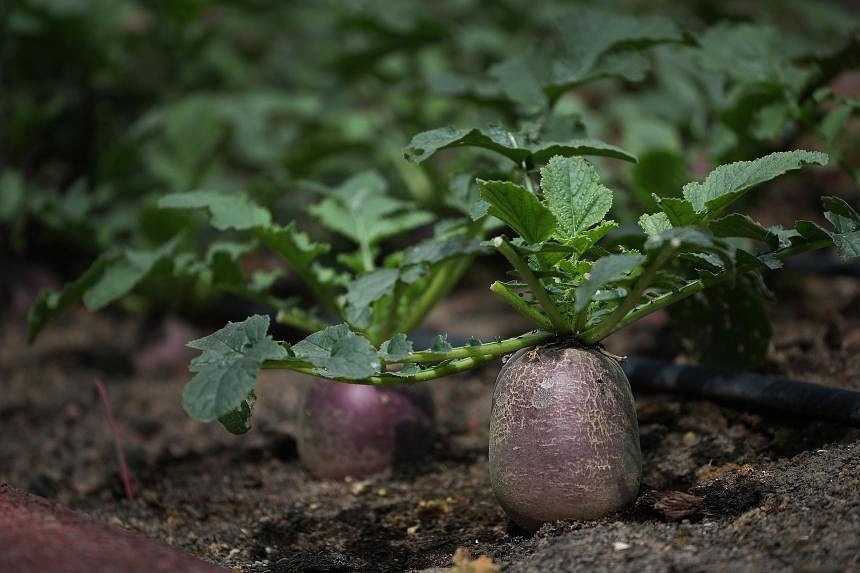NEW YORK – Fruits and vegetables grown in urban gardens in Europe and the US have a carbon footprint six times larger on average than the same produce grown on conventional farms, according to researchers.
Farmers and gardeners at 73 urban agriculture sites in France, Germany, Poland, Britain and the US participated as citizen scientists in the research led by scientists at the University of Michigan and published on Jan 22 in the Nature Cities journal. The study is the largest ever conducted comparing the emissions of urban and conventional agriculture.
Researchers tracked greenhouse gas emissions from farm infrastructure, supplies and irrigation water through daily diary entries made during the 2019 season. They found that on average, food grown in city gardens emitted 420g of carbon dioxide (CO2) equivalent per serving, compared with 70g of CO2 equivalent per serving for food from conventional farms.
But some crops proved to be less carbon intensive when grown in cities than on conventional farms. Urban tomatoes often outperform conventional tomatoes, mainly due to the energy intensity of commercial greenhouses. Highly perishable conventional vegetables such as asparagus, which are often distributed by plane, also have an equal or higher carbon footprint than the same crops grown in cities.
About 20 per cent to 30 per cent of global city dwellers engage in some form of urban agriculture, most of which takes place in soil on open-air plots. Growing food in cities has benefits such as mitigating higher temperatures from heat-trapping asphalt and concrete, known as the urban heat island effect. It also provides key social and health benefits to people involved – boosting their mental health, improving their diets and strengthening local social networks.
Research on the crops that urban farmers choose to grow suggest their motivation for choosing one vegetable or another varies substantially and depends on priorities like having a balanced diet or on cultural preferences. People might choose to grow food that is not widely available in the city they live in. But the most common motivation among those the scientists surveyed for this research was environmental sustainability.
“Urban agriculture offers a variety of social, nutritional and place-based environmental benefits, which make it an appealing feature of future sustainable cities,” Mr Jason Hawes, the paper’s co-lead author, said in a statement. “Urban agriculture practitioners can reduce their climate impacts by cultivating crops that are typically greenhouse-grown or air-freighted, in addition to making changes in site design and management.”
Switching crops is not the only way to make urban farming more climate-friendly, the authors found. “Most of the climate impacts at urban farms are driven by the materials used to construct them – the infrastructure,” said co-lead author Benjamin Goldstein. “These farms typically only operate for a few years or a decade, so the greenhouse gases used to produce those materials are not used effectively.”
Extending the lifetime of materials and structures such as raised beds, composting containers and sheds can help reduce an urban garden’s footprint. The researchers also suggest reusing urban waste such as construction debris to build structures, and using rainwater and recycled water for irrigation.
The social benefits of urban farming are so high that, when considered together with the carbon and environmental impact, they still outcompete conventional agriculture, the researchers concluded. BLOOMBERG

